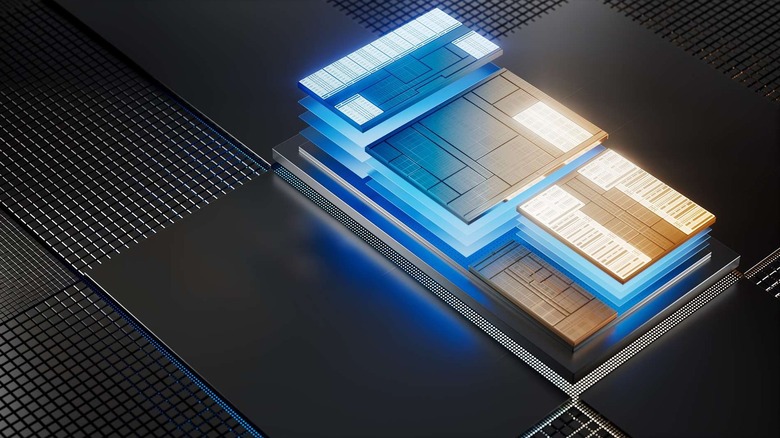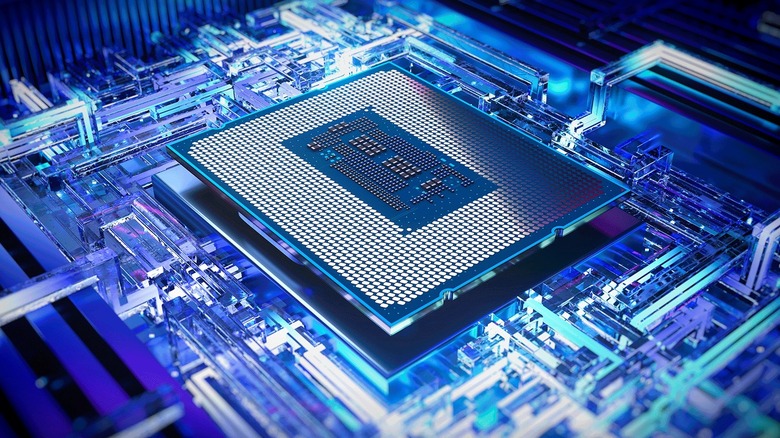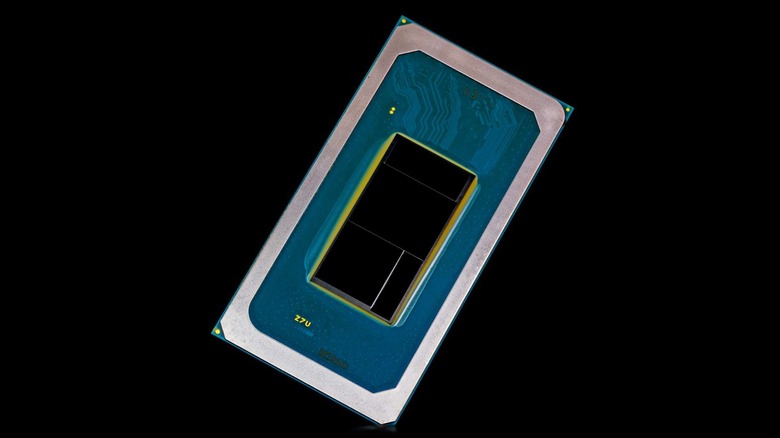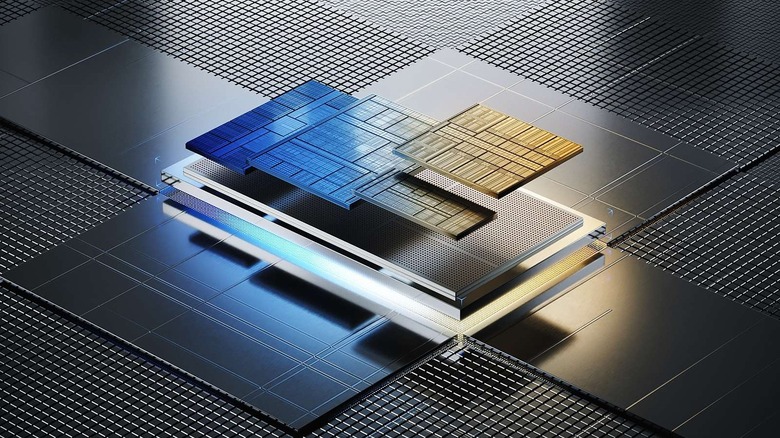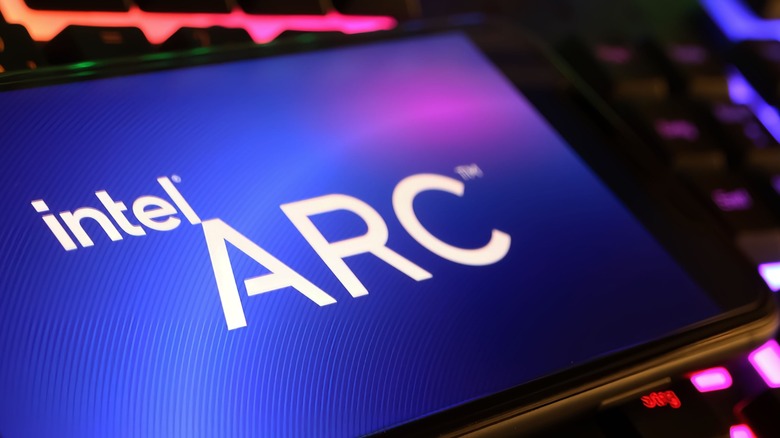Differences Between Intel's Meteor Lake & Raptor Lake
Intel's 14th-generation chips consist of two processor lines with different architectures. The Raptor Lake Refresh chips, released first in October 2023, were based on the even older 13th-gen Raptor Lake processors Intel released in 2022. On the other hand, the more recent Meteor Lake processors launched in December 2023.
Since Intel calls both the Raptor Lake Refresh and Meteor Lake processors 14th-generation chips, you might wonder about the differences between the two. Despite being called 14th-gen, Raptor Lake and Meteor Lake chips use different architectures that make them completely unique from each other.
Meteor Lake was set to replace the 13th-generation Raptor Lake chips, but several rumors suggest a delay in desktop CPU development, leading to the 14th-generation Raptor Lake Refresh instead. However, since Intel also released the Meteor Lake laptop chips in late 2023, it's easy to see how customers could get confused between the two types of processors.
What are Intel Raptor Lake chips?
Intel's Raptor Lake architecture is used in two different Intel processor generations — 13th and 14th-gen. These chips are also the last Intel processors to sport the Intel Core i branding, as it switched to Intel Core / Core Ultra for its succeeding chips.
Although the 14th-generation Raptor Lake Refresh is essentially just a slight improvement of the 13th-gen Raptor Lake processors, Intel added more cores to the 14th-gen Core i7, bumping it from 16 to 20 cores. Despite getting improved performance, Intel kept the Raptor Lake Refresh chips at the same recommended retail price, delivering more value to its customers.
So, if you're wondering which consumer Intel processors use the Raptor Lake Refresh architecture, here's a complete list: Intel Core i9-14900/KF/KS/K/F/T, Intel Core i7-14700/KF/K/F/T, Intel Core i5-14600/KF/K/T, Intel Core i5-14500/T, Intel Core i5-14400/T/F, and Intel Core i3-14100/F/T for desktop CPUs; and Intel Core i9-14900HX, Intel Core i7-14700HX/14650HX, Intel Core i5-14500HX/14450HX, Intel Core 7-150U, Intel Core 5-120U, and Intel Core 3-100U for laptop CPUs.
You can also check out the rest of the 13th-gen Intel Core processor lineup directly on the Intel website to see which Intel processors use the Raptor Lake architecture. We couldn't show them all here as Intel has over 50 13th-gen chips on that list.
What are Intel Meteor Lake processors?
Although Meteor Lake processors are also called 14th-generation chips, they use a different architectural design than the Raptor Lake chips these chips replace. However, the easiest way to tell the differences between the old 14th-gen chips and the newer ones is to look at their naming scheme.
At the time of writing, all Intel Core Ultra chips are Meteor Lake processors. These include the following consumer chips: Intel Core Ultra 5-125H/U, Intel Core Ultra 5-134U, Intel Core Ultra 5-135H/U, Intel Core Ultra 7-155H/U, Intel Core 7-164U, Intel Core Ultra 7-165H/U, and Intel Core Ultra 9-185H. Note that Meteor Lake processors do not have desktop variants yet, meaning all the listed chip models were made for laptops.
Note that the Intel Core processors (the ones without the 'Ultra' branding) still use Raptor Lake architecture. So, you shouldn't confuse the Intel Core Ultra (Meteor Lake chips) with just Intel Core processors (Raptor Lake Refresh chips).
Process node differences
The biggest change from Raptor Lake to Meteor Lake is Intel's use of a smaller process node. The former used Intel 7, a 10nm process node, while the latter used Intel 4, based on 7nm. The process node refers to the manufacturing process used for making the chips, and a smaller process node usually indicates a smaller transistor. So, if a processor uses a smaller node (thus a smaller transistor size), the manufacturer can pack more transistors in the same footprint.
Aside from the greater number of transistors on the chip, the smaller node size also meant improvements in clock speed and efficiency. So, the Intel 4 process node used for the Meteor Lake chips means these chips would consume less power despite delivering performance similar to Raptor Lake chips.
However, Intel didn't just stop at making developing and using a smaller process node. Instead, it built an all-new chip design (at least for Intel) that switched from the usual monolithic design to a modular chiplet build.
Monolithic vs. chiplet designs
The Raptor Lake Intel processor used the usual monolithic design, meaning the processors come as a single, highly integrated unit. Although this typically meant superior performance over chiplet-based designs, Intel's research advancements allowed it to use a chiplet-based design for the Meteor Lake chips without sacrificing speed.
Intel's chiplet design for the Meteor Lake chips breaks the processor into four segments: the compute die, the graphics die, the SoC tile, and the I/O tile. These four segments are then combined using Intel's Foveros technology, allowing them to achieve the same performance as monolithic processors while maintaining better power efficiency.
Aside from its power advantage, the modularity that chiplet designs bring means Intel can easily customize its Meteor Lake chips, making it easier to change and even build upon the current processor generation for future developments.
Furthermore, chiplet designs can lead to better yield. That's because if a processor has one defective segment, Intel could just replace the malfunctioning unit instead of binning the processor or discarding it altogether.
Integrated Intel Arc graphics vs. Iris Xe and Intel UHD
The Intel Meteor Lake chips also have a bigger advantage over the Raptor Lake processor: its integrated GPU. The previous generation used Iris Xe and Intel UHD for CPUs with integrated graphics. In contrast, the newer Meteor Lake processors use the Xe-LPG architecture based on the Xe-HPG that Intel uses for its Arc GPUs.
This new GPU architecture gives the new Meteor Lake processors more processing power, so much so that it is finally on par with AMD's powerful RDNA 3 integrated GPUs found in its Ryzen 8000 laptop APUs. However, since Intel has yet to release any Meteor Lake or newer desktop CPUs, we have yet to see if this advantage will also translate into the desktop space.
Although Intel's Meteor Lake chips are grouped with the 14th-generation Raptor Lake processors, the former uses new technologies and advancements you cannot find in the latter. It's more efficient, has more powerful integrated graphics, and is cheaper to produce, hopefully leading to savings for the final consumer.
